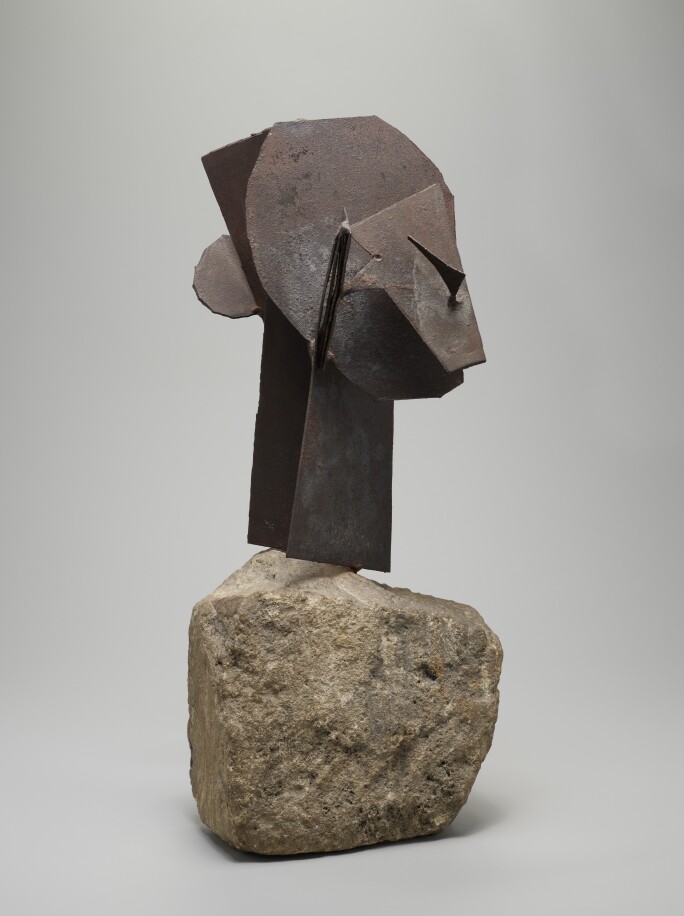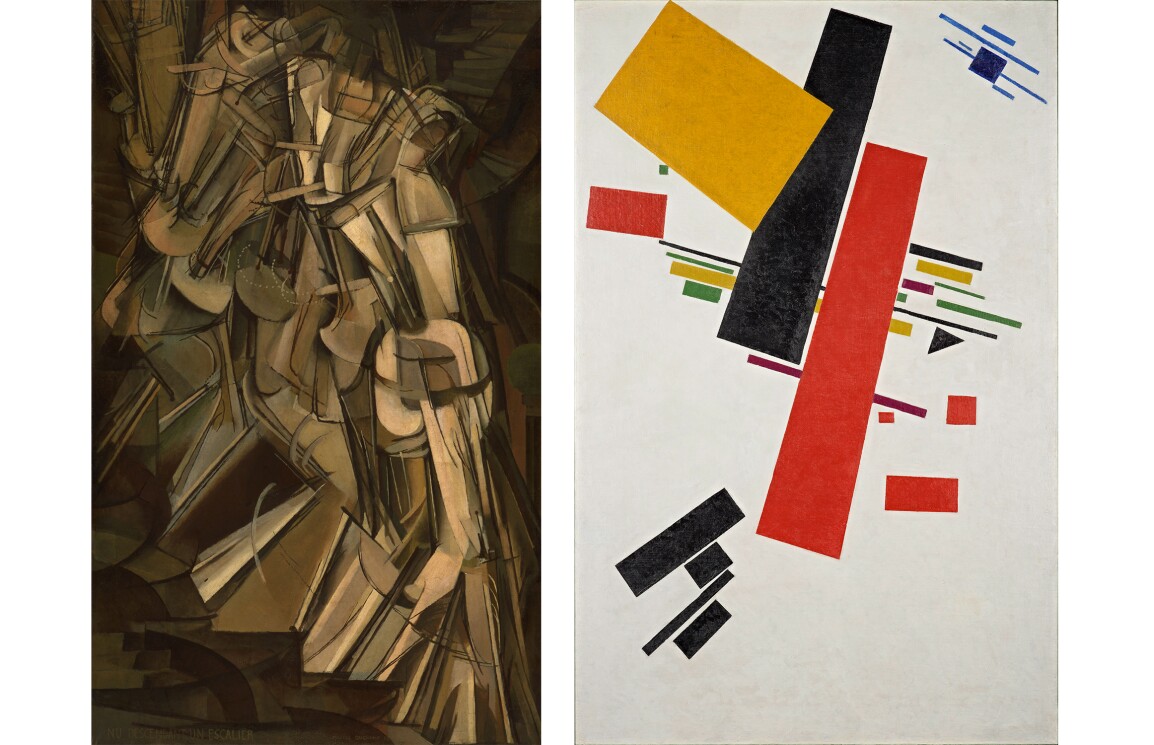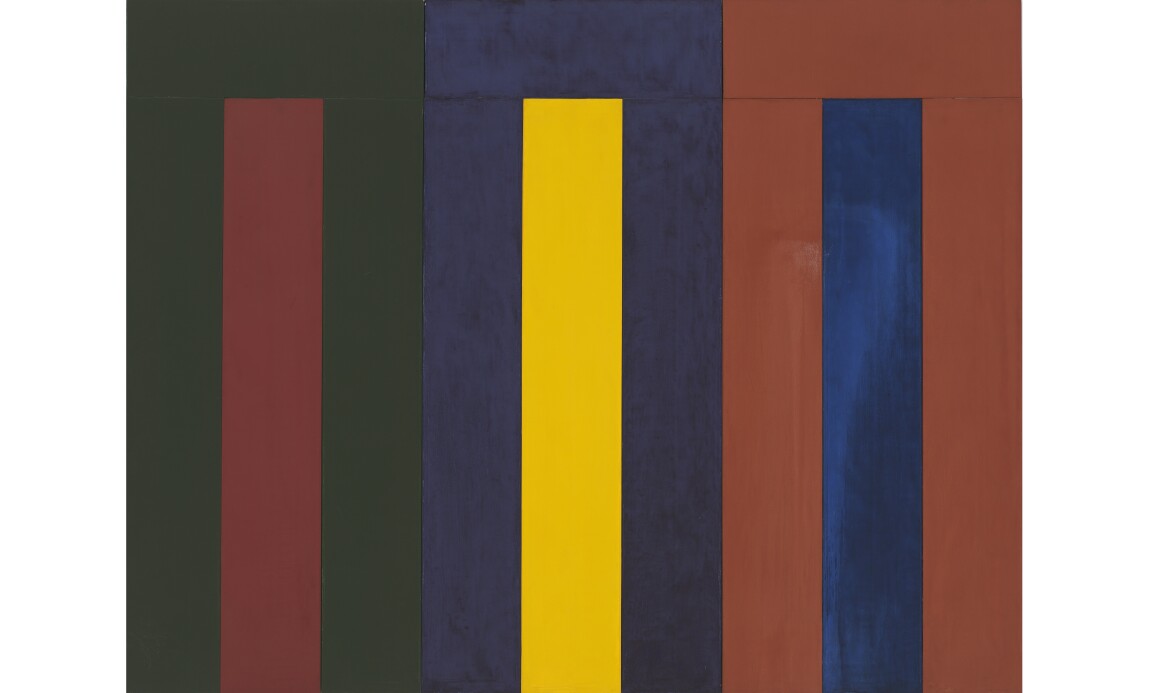
“I’ve been painting sculpture all my life. As a matter of fact, the reason I became a sculptor is that I was first a painter. “
Hi Candida from 1961, totemic in its presence, is a distinguished sculpture that marks a time of creative ingenuity in the mature stages of David Smith’s celebrated career. Smith’s three-dimensional practice has explored a careful juxtaposition of brawny materiality with precise geometric form, charged with an expressive dynamism that weaves between positive and negative space. Named after his younger daughter, Candida Smith, Hi Candida stretches its limbs out in Smith’s characteristic Cubist lyricism, foretelling the evolution of his visual language leading up to his summer sojourn in Voltri, Italy in the fall of 1962. Testament to the spectacular sculptural ingenuity that defines his legendary practice, Smith’s works are housed in countless renowned institutional collections such as The Art Institute of Chicago, The Metropolitan Museum of Art, New York, the Museum of Fine Arts, Boston, and the Storm King Art Center, Mountainville.


After his first year of collegiate education at Ohio University in Athens County, Smith spent a summer working in South Bend, Indiana for the Studebaker factory. Working on automobiles in the assembly line, he learned how to operate lathes, milling machines, spot welders, and other equipment that would feature prominently in his sculptural practice to come. The first steps into his artistic practice, however, began in painting; in search of an education in art, Smith ultimately relocated to New York City, where he enrolled at the Art Students League studying painting and woodcut printing. Studying with Czech artist Jan Matulka throughout the late 1920s, Smith encountered what he referred to as his “Great Awakening of Cubism,” exposure to the compositional language of masters such as Pablo Picasso, Georges Braque, and Fernand Léger that would prove formative and foundation to his own innovative sculpture. Smith, in conversation with curator Katharine Kuh, had underscored: “Most sculptors have had training in sculpture. I had training in painting, none in sculpture. I arrived at sculpture through montage and cubism—you notice I paint my sculpture. I’ve always made painted sculpture; not one year that I’ve worked have I failed to do this.” (the artist quoted in: Susan J. Cooke ed., David Smith: Collected Writings, Lectures, and Interviews, Oakland, 2018, pp. 343-4)

“American machine techniques and European cubist tradition, both of this century, are accountable for the new freedom in sculpture-making. Sculpture is no longer limited to the slow carving of marble and long process of bronze. It has found new form and new method… The building up of sculpture from unit parts, the quantity to quality concept, is also an industrial concept, the basis of automobile and machine assembly in the steel process.”
Smith’s claim reaches beyond the mere pigment on his sculptures and reaches into his artistic vision, hinting at the complex compositional vigor and gestural constructions that define his undoubtedly painterly three-dimensional practice. Hi Candida’s geometric sections and their interplay of line, plane, and volume undeniably evoke the deconstruction of the picture found in Cubist collages and compositions, while its unified structural elegance and interrogation of the expressive capacities of metal invoke the sculptures of Julio González—whom he was introduced to by John Graham in 1932. Simultaneously, the quadratic branch-like limbs resonate with the geometric compositions of Constructivist artists like Kazimir Malevich. In a rich dialogue with art historical precedent, Smith established a truly singular and innovative visual lexicon as art historian and curator Edward F. Fry underscored: “Smith’s great achievement was to have understood the sculptural possibilities of Cubism and to have developed them to an absolute limit, far beyond that reached by earlier Cubist sculptors.” (Exh. Cat., New York, Solomon R. Guggenheim Museum, David Smith, 1969, p. 14) His sculptures also engage in rich dialogue with Abstract Expressionism of the 1950s, its flat and curved planes hinting at anthropomorphic elements yet remaining resolutely abstract, recalling the Women of Willem de Kooning or the post-and-lintel constructions of Brice Marden.

Hi Candida is a paradigmatic example of Smith’s career-long reinvestigation of the tradition of free-standing sculpture through a distinctly personal and contemporary lens. Convex and concave forms derived from sections of tubular cylinders come together in a monumental presence, inviting the viewer to circumambulate and appreciate the complexity of Smith’s compositional rigor. Smith introduces paint to the present work in an era that considered it nearly sacrilegious—blurring the strict boundaries between painting and sculpture—with a mechanic shop-like roughness that affirms the sculptural form without relying on the effects of color. In a 1961 interview, given the same year the present work was executed, Smith discussed using paint in his sculpture as a cornerstone of his practice: “I belong with painters, in a sense; … Some of the greatest departures in the concept of sculpture have been made by Picasso and Matisse… Painting and sculpture are not very far apart. I painted for some years. I’ve never given it up.” (the artist quoted in: “BBC Radio interview with David Sylvester, 6 June 1961,” in: Theo Crosby and John Bodley, eds., Living Arts, Vol. 1, No. 3, April 1964) With a red circle, perhaps standing in for a head, humanoid limbs sprouting out to either side, and the bright scarlet planes spelling out a lowercase “i,” Smith investigates the traditional sculptural motif of the freestanding figure in a monumentalized revival.

“Sculpture is a poetic statement of form.”
Yet, suggesting a different reading of the work may be its title—Hi Candida—a warm greeting to the artist’s second daughter Candida Smith. Following his remarriage in 1953 and the birth of his two daughters Rebecca and Candida over the next two years, Smith has frequently referred to his children in his work, whether it be inserting their names into the titles or into the sculptures themselves, as seen with the inscription “Hi Rebecca” on Cubi X at the Museum of Modern Art, New York or stencils “Becca” and “Dida” on works like Sentinel III. Although the precise motivations behind these decisions are unclear, perhaps they read as a reflection of his desire to connect his role as a father with his artistic practice that occupied most of his time and attention, contemplating this new chapter of life in parenthood through his sculpture. His sculptures, wherever in the world they are, say hello to his two daughters in a warm and tender voice. As if to resonate with this tenderhearted sentiment, Hi Candida extends care and love by spreading its branches out like a growing tree providing shade to the creatures underneath. Despite, or possibly because of, these multifaceted elements, the present work displays a masterful sculptor interrogating at once his personal emotions and a universal human experience: “My father put his sculptures in our fields so that he could look at each work in relation to the national world of the mountains and sky and also to its fellow sculptures. Again and again, he referred to his ‘work stream’; each work of art being as a vessel filled from the stream while never wholly separate. I understand his term to mean the flow of his identity made physically manifest—the process by which images and ideas from decades or days before inform a work in progress or yet to be made.” (Candida Smith, “The Fields of David Smith,” in: Exh. Cat., New Windsor, Storm King Art Center, The Fields of David Smith, 1999, p. 17)




